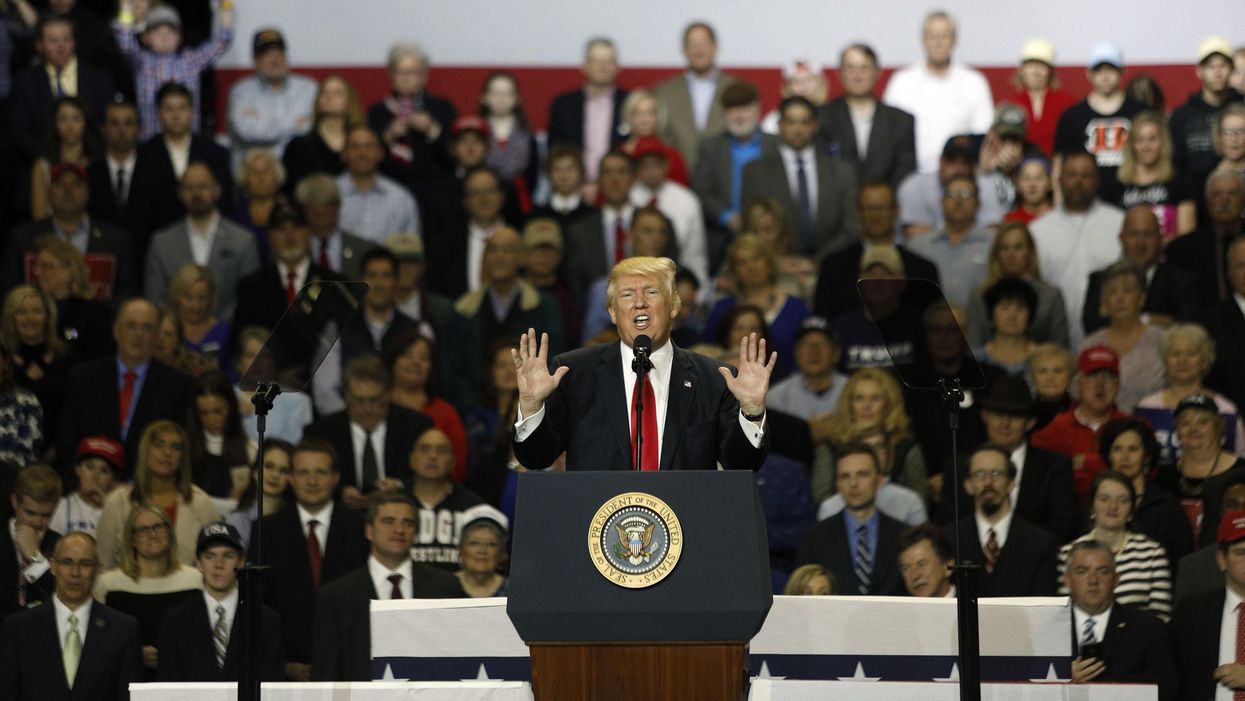Public figures live on within the words they are remembered by. To understand the effect they had on history, their words need to be documented.
No one is absolutely sure of exactly what Abraham Lincoln said in his most famous speech, the Gettysburg Address. Five known manuscripts exist, but all are slightly different. Every newspaper story from the day contains a different account.
In the case of modern presidents, for the official record, we rely on transcriptions of all their speeches collected by the national government.
But in the case of Donald Trump, that historical record is likely to have a big gap. Almost 10 percent of his public speeches as president are excluded from the official record. That means a false picture of the Trump presidency is being created in the official record for posterity.
In 1957, the National Historical Publications Commission, a part of the National Archives, recommended developing a uniform system so all materials from presidencies could be archived. They did this to literally save presidential records from the flames: Warren G. Harding's wife claimed to have burned all his records, and Robert Todd Lincoln burned all his father's war correspondence. Other presidents who had their records intentionally destroyed include Chester A. Arthur and Martin Van Buren.
So the government collects and retains all presidential communications — including executive orders, announcements, nominations, statements and speeches. This includes any public verbal communications by presidents, which are also placed in the Compilation of Presidential Documents.
These are part of the official record of any administration, published by the National Archives. In most presidencies, the document or transcript is available a few days to a couple of weeks after any event. At the conclusion of an administration, these documents form the basis for the formal collections of the Public Papers of the President.
As a political scientist, I'm interested in where presidents give speeches. What can be learned about their priorities based on their choice of location? What do these patterns tell us about administrations?
For example, Barack Obama primarily focused on large media markets in states that strongly supported him. Trump went to supportive places as well, including small media markets such as Mankato, Minn., where the airport was not even large enough to accommodate the regular Air Force One.
I found something odd when I began to organize my own database of locations for Trump's speeches. I was born and raised in Louisville, so I pay attention to Kentucky. I knew that on March 20, 2017, he addressed a rally in Louisville — a meandering speech that touched on everything from coal miners to the Supreme Court, China to building a border wall and the "illegal immigrants" who were, he said, robbing and murdering Americans.
But when I looked at the compilation a few months later, I couldn't find the speech. No problem, I thought. They are running behind and will put it in later.
A year later, it was still not there. Furthermore, others were missing. These were not any speeches, only the rallies. By my count, 147 separate transcripts for public speaking events are missing from Trump's official records — just above 8 percent of his presidential addresses.
A 1978 law says administrations must retain "any documentary materials relating to the political activities" of the president or his staff if such activities "relate to or have a direct effect upon the carrying out" of the president's official or ceremonial duties.
An administration may exclude records that are purely private or don't have an effect on official duties. All public events are included, such as quick comments on the South Lawn, short exchanges with reporters and all public speeches, radio addresses and even public telephone calls to astronauts aboard space shuttles.
But Trump's widely attended rallies, and what he said at them, have so far been omitted from the public record his administration supplied to the Compilation of Presidential Documents. And while historians and the public could make transcripts from publicly available videos, that still does not address the need to have a complete official collection of the 45th president's statements.
Federal law says presidents may exclude "materials directly relating to the election of a particular individual or individuals to Federal, State, or local office, which have no relation to or direct effect upon the carrying out of ... duties of the President."
This has been interpreted to mean an administration could omit notes, emails or other documentation from what it sends to the compilation. While many presidents do not provide transcripts for speeches at private fundraising events, rallies covered by America's press corps do not likely fall under these exclusions.
Government documents are among the primary records of who we are as a people.
These primary records speak to Americans directly; they are not what others tell us or interpret for us about our history. The government compiles and preserves these records to give an accurate accounting of the leaders the country has chosen. They provide a shared history in full, instead of an excerpt or quick clip shown in a news report.
Since 1981, the public has legally owned all presidential records. As soon as a president leaves office, the National Archivist gets legal custody of all of them. Presidents are generally on their honor to be good stewards of history. There is no real penalty for noncompliance.
But these documents have so far always been available to the public — and they've been available quickly. Internal documents like memos or email face a rigorous archival review that lasts years before they are even accessible. All public speeches of every president since Bill Clinton have been available online. Until Trump, there was nothing missing.
By removing these speeches, Trump is creating a false perception of his presidency, making it look more serious and traditional than it was.
That Louisville speech, for example, is still among the missing.
This article is republished from The Conversation under a Creative Commons license. Click here to read the original article.
![]()


















